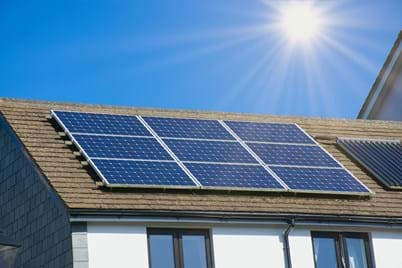Having access to electricity is both a luxury and an expense. Modern life is very much reliant on power, but as prices continue to rise rather dramatically, it is prudent to have a strategy in place to minimise your electricity usage to keep on top of the rising costs.
You may have received a letter in the mail recently from your electricity provider regarding increased prices. I certainly did. I then called said electricity provider and had a big chat about my existing plan and what options might be available to get ahead of the price rises. I ended up changing my plan to one with a slightly lower charge per kWh, but this new plan also had a lower overall discount. However, with the help of a calculator (and the guidance of lady on the phone), it still turned out to be a cheaper option. I’m not saving a huge amount, but I’ve offset the increase I would have experienced had I stuck with our existing plan.
In order to find the best electricity contract for your individual circumstances, it helps to have an understanding of how electricity is charged in Australia as well as being aware of any discounts or pension plans that may be applicable to you if eligible.
Understanding your energy bill
 No matter which provider you are with, your energy bill should have standard information on it with details about your energy use. Pricing structures can be hard to interpret at first glance, but if you break the bill down into the different types of charges you can more easily understand your bill. Your energy bill should have two charge rates on it, usage and service.
No matter which provider you are with, your energy bill should have standard information on it with details about your energy use. Pricing structures can be hard to interpret at first glance, but if you break the bill down into the different types of charges you can more easily understand your bill. Your energy bill should have two charge rates on it, usage and service.
Usage
Electricity usage is measured in kilowatt hours (kHh) and your bill will display your total usage as well as how much you are being charged per kWh. If your household uses gas, your gas will be measured in magajoules per hour (MJ). The figures on your bill are determined by your meter on your property which are read manually by an employee of your provider. If you have a smart meter this figure can be accessed remotely.
Often your bill will display your usage for the current quarter compared with the same time last year as well as display a graph showing your average daily usage over a set period. This allows you to gauge your usage to see if you are increasing or decreasing your power consumption over time. Legally, your provider also has to include a graph indicating your power usage compared with similar sized households in your area.
Your usage charges will be influenced not only by how much power you use, but also when you use the power. Power used at peak times will attract a higher charge than power used at shoulder or off peak times. Often these times will change depending on the time of the year. Your bill should clearly show if you are charged different rates over the course of a day. Some providers have a set rate, known as a ‘single rate tarrif’ which doesn’t vary through the day, but is still labelled as ‘peak usage’.
The key to saving money on your electricity bill (provided you plan is not on a ‘single rate tarrif’) is knowing when peak and off-peak times begin and end so you can maximise your usage during off-peak times. Depending on your provider, peak and off peak periods will vary, you can compare these times here. Generally, peak times will be when most people are home and using the most appliances and electricity. Afternoons get busy on the grid when people are home from school and work as they are cooking dinner, watching TV and using lights, so often after 4 or 5pm until 9pm is a peak period. Shoulder periods are typically still times when families are home but usually are morning such as 7am-9am, when families are up and about making breakfast, watching TV or listening to the radio and charging up their appliances for the day. Off peak times are typically when most people are either asleep or at work (ie the middle of the day or after 10pm).
Service
Service charges are a fixed rate, based on the number of days your energy provider has provided you with electricity (or gas) multiplied by their daily service charge. This rate is not influenced by how much or how little power you use.

Some simple ways to reduce your power usage during peak times
- Rise with the sun and go to bed as the sun sets to avoid the need to use lights for long periods.
- Remove heavy drapes and blinds and allow plenty of natural light into your home to avoid using lights during the day.
- Consider installing and utilising external blinds to reduce heat in Summer.
- Consider consulting an architect to open up dark spaces in your home and bring more light (and warmth in Winter) into your home to reduce use of lighting in daylight hours.
- Use door snakes to reduce drafts so heating is not lost.
- Wash your clothes during off peak periods, if you wake up early do it first thing (say 6am) or if you’re a night owl pop it on just before you go to bed (after 10pm).
- Whack on your dishwasher as you head off to bed (or wait till early morning) rather than run it straight after dinner.
- Try loading up the slow cooker one or two nights a week and pop that on just before you head to bed (or do it first thing in the morning) to avoid use of the oven at peak times.
- Turn appliances off at the wall if not in use, and unplug things entirely if you don’t use them several times a day.
- Save time and energy (mental and electrical) during the week and meal prep. Cook up a couple of dishes in the oven at the same time. Such as roast some veggies while baking a frittata. Aim to cook things that need a similar temperature and cooking duration.
- Look at updating your white goods if they are older models and using lots of power.
- Have candlelit dinners and baths!
- Use rechargeable LED battery run night lights for young kids overnight instead of a lamp.
- Consider buying an LED rechargeable reading light you can attach to your book for evening reading in bed so you don’t need to use a bedside lamp.
- Consider installing solar panels
Check what other suppliers are charging. Keep an existing bill and jump online to see how your provider compares. Call your supplier and ask if there might be a better plan for you and your family. Find the right energy plan for you by comparing retailers at www.energymadeeasy.gov.au/start
 Just now, in the middle of writing this article, I stopped and did a survey of my own home. I turned off 2 switches in our kitchen (one for my toaster, one for a laptop charger not in use). In the lounge I turned off 2 switches (one for a power board which includes our TV and DVD and one with a mobile phone charger - but no phone - attached) none of which will be in use until this evening. I also had 3 switches on in my bedroom, one for my bedside lamp and two for cords just dangling from them but with no appliance attached! Each and every one of those ‘on’ switches with a cord attached will have been using a small amount of electricity.
Just now, in the middle of writing this article, I stopped and did a survey of my own home. I turned off 2 switches in our kitchen (one for my toaster, one for a laptop charger not in use). In the lounge I turned off 2 switches (one for a power board which includes our TV and DVD and one with a mobile phone charger - but no phone - attached) none of which will be in use until this evening. I also had 3 switches on in my bedroom, one for my bedside lamp and two for cords just dangling from them but with no appliance attached! Each and every one of those ‘on’ switches with a cord attached will have been using a small amount of electricity.
If you are struggling to cover living expenses such as electricity or hold a pension card you may be eligible to apply for a rebate. The Low Income Household Rebate is paid once each financial year and helps low income NSW households cover the costs of their energy bills.
If you’re finding the larger quarterly bills a strain on your cash flow, consider direct debiting a set amount into a dedicated bills account each month, week or fortnight to ease the cash burden.
Some electricity retailers also have the option to pay bills in smaller more regular instalments. Energy Australia for example has a ‘Regular Pay’ plan which gives customers the option to pay their bills weekly, fortnightly or monthly therefore reducing the strain of a higher quarterly bill. Alternatively you may like to access support from Australian Mutual Bank which has free budgeting tools and services available to its members to assist with allocating and prioritising funds and reducing financial stress.
Living in sync with the Sun will do more than save you some pennies. Too much exposure to artificial light (ie having lights on when it’s dark outside) can negatively impact our health. However rising with the sun and going to bed when it slips past the horizon has been scientifically shown to have positive health benefits. Exposure to natural light helps to regulate our circadian rhythms, which in turn is linked to hormone and mood health, reduced stress levels and increased quality of sleep. Perhaps the old age ‘early to bed early to rise’ really does make one ‘healthy, wealthy and wise’ after all!

Alison Gallagher is a freelance writer, resourcefulness expert and entrepreneur. She has been featured in various publications including Stellar Magazine, Australian Health and Fitness Magazine, and Cleo Magazine. Alison is particularly passionate about sharing practical tips on how to live simply, sustainably and seasonally.






